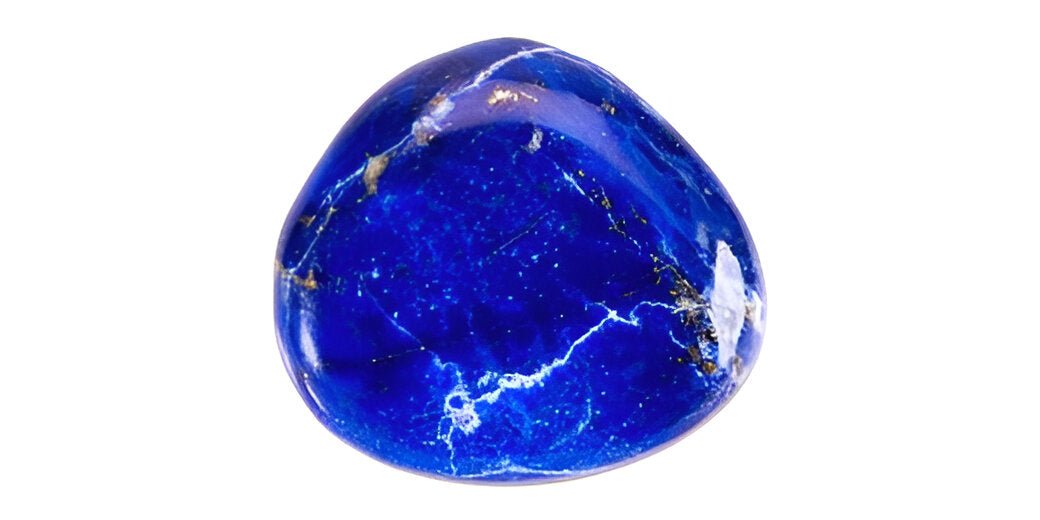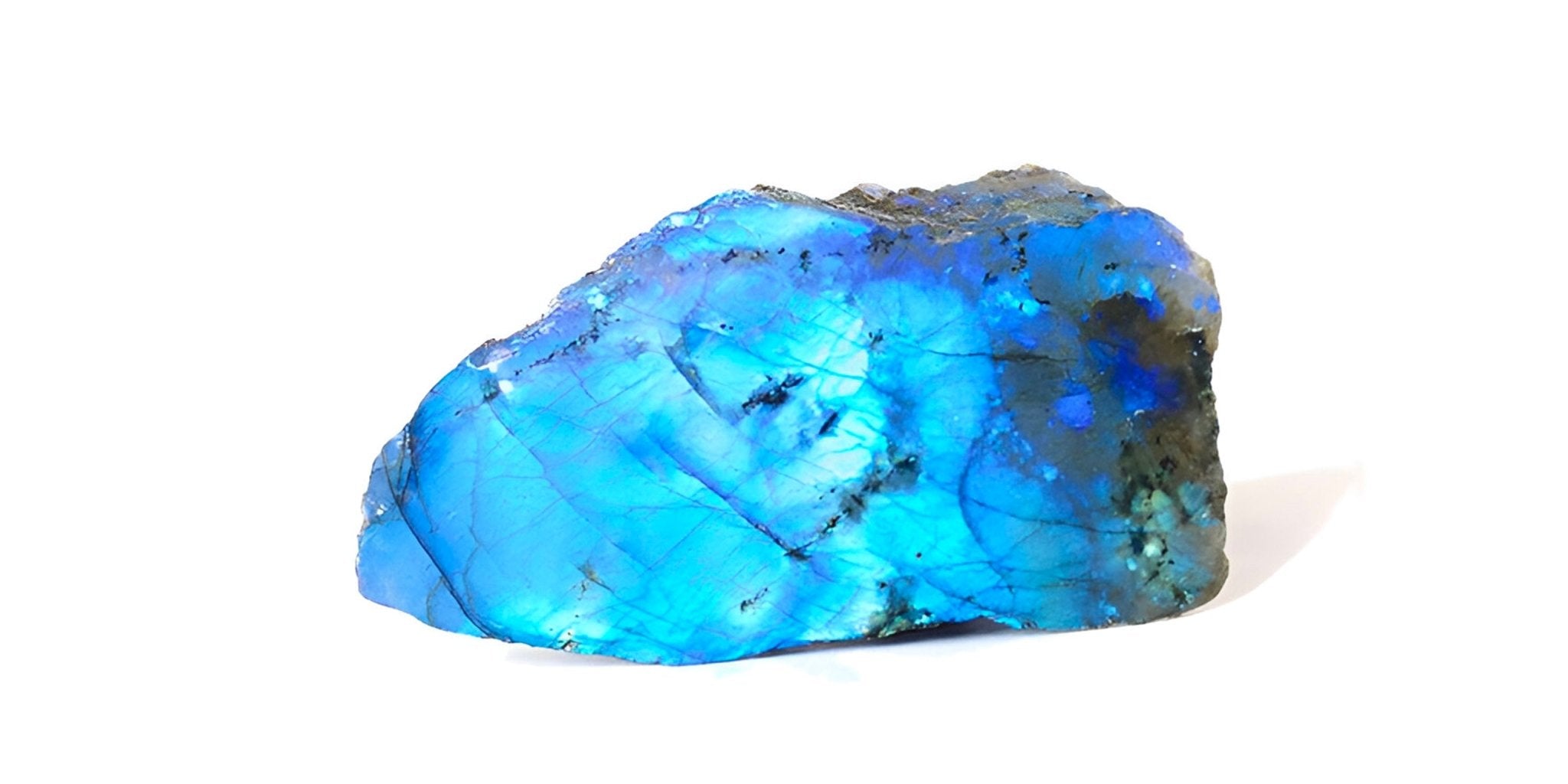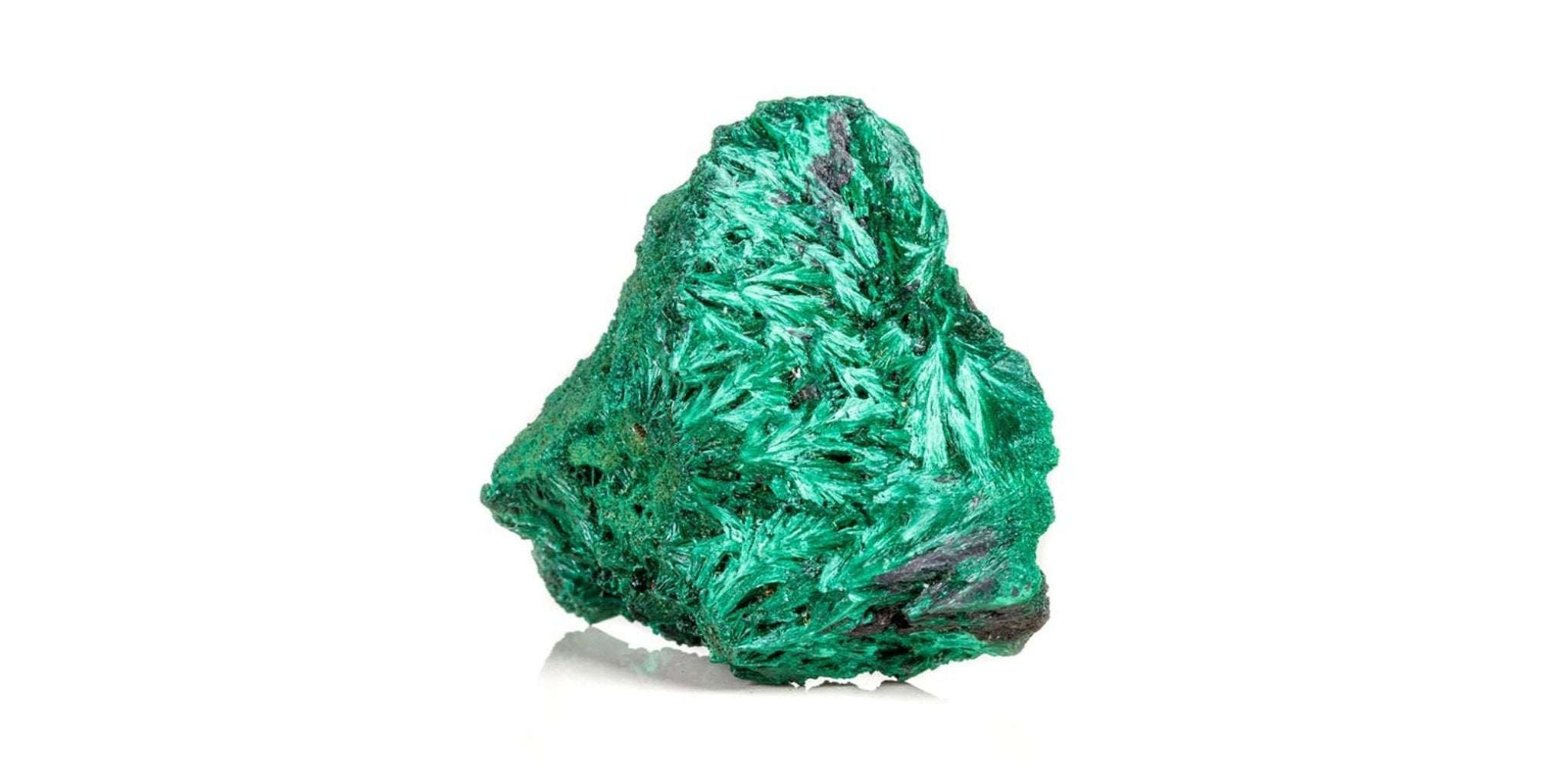Lapis Lazuli Stone Identity Sheet
- Name Origin: The name comes from the Latin "lapis" for stone and the Persian "lâzhward" for blue.
- Group: The stone belongs to the silicate group.
- Chemical Composition: The chemical composition is Na₈(Al₆Si₆O₂₄)S₂ with inclusions of calcite, pyrite, sodalite, and lazurite.
- Crystal System: The crystal system is cubic.
- Hardness: The hardness ranges from 5 to 6 on the Mohs scale.
- Deposit(s): The main deposits are found in Afghanistan, Chile, Russia, the United States, and Pakistan.
- Color(s): The color is deep blue with golden pyrite inclusions and white calcite veins.
- Chakras: The stone is associated with the Third Eye (Ajna) and Throat (Vishuddha) chakras.
Where does the name Lapis Lazuli come from?
Origin of the Name
The name Lapis Lazuli has its roots in two ancient languages: Latin and Persian. The term "Lapis" in Latin means "stone," highlighting the mineral nature of this gem. "Lazuli" derives from the Persian "lâzhward," meaning "blue," referring to the stone's characteristic color. This name thus combines the concepts of stone and blue, perfectly describing this prized gem.
Historical Significance
Lapis Lazuli has a rich history of use and veneration across different civilizations. The ancient Egyptians used it to make amulets and jewelry, believing in its protective and spiritual powers. Mesopotamian civilizations associated it with deities and used it to create cylinder seals and figurines. During the Middle Ages, Lapis Lazuli was imported into Europe, where it was used to produce the precious ultramarine blue pigment for Renaissance artworks.
Etymology and Linguistic Evolution
The word "Lapis Lazuli" has evolved over centuries and across languages. In Latin, "lapis" means "stone," while "lazuli" comes from the Persian "lâzhward," meaning "blue." This term has influenced many languages, including the Arabic "azul" and the Spanish "azul" to designate the color blue. This linguistic evolution reflects the long history and significance of this stone in different cultures and eras.
What is the history of Lapis Lazuli?
Ancient Origins
Lapis Lazuli, a deep blue semi-precious stone, has captivated humanity for millennia. Its origins date back to antiquity, with evidence of its use more than 6,000 years ago. The first Lapis Lazuli deposits were discovered in the Hindu Kush mountains, located in present-day Afghanistan, a place still renowned for producing this precious stone. The Sumerians and Babylonians were among the first to value Lapis Lazuli. They used this stone to create cylinder seals, jewelry, and religious objects. Associated with the goddess Inanna, symbol of love and beauty, this stone was also seen as a symbol of divine power. Sumerian tablets mention Lapis Lazuli, indicating its economic and cultural importance.
Ancient Egypt
Ancient Egypt is another civilization where Lapis Lazuli was held in high esteem. The Egyptians imported it from Afghanistan to create amulets, scarabs, and jewelry. Lapis Lazuli also adorned funerary masks, the most famous being that of Tutankhamun. In Egyptian mythology, the stone was associated with the goddess Ma'at, symbol of truth and justice. The Egyptians believed that Lapis Lazuli possessed protective and spiritual properties, making it one of the most precious stones in their culture.
Use in the Middle Ages and the Renaissance
During the Middle Ages, Lapis Lazuli reached Europe via trade routes linking Central Asia to the West. This stone was so prized that it was often more expensive than gold. Renaissance artists used the ultramarine blue pigment, extracted from Lapis Lazuli, to create skies and garments in their paintings. This pigment was highly sought after for its intensity and durability. Masters such as Leonardo da Vinci and Michelangelo used this pigment in their works, further increasing the demand and value of Lapis Lazuli. In medieval Europe, Lapis Lazuli was also associated with the Virgin Mary, who was often depicted wearing blue in religious art. The ultramarine pigment was used to illustrate purity and holiness, reinforcing the symbolic and spiritual importance of Lapis Lazuli in sacred art.
Modern Era
In modern times, Lapis Lazuli continues to be prized for its beauty and spiritual properties. Explorers and scientists have deepened their knowledge of this stone, discovering new deposits in South America, particularly in Chile. Chilean Lapis Lazuli, although slightly different in composition, is also highly valued on the global market. Today, Lapis Lazuli is used not only in jewelry but also in crystal healing, where it is believed to offer benefits for mental and emotional health. Gemstone enthusiasts appreciate it for its unique color and golden pyrite inclusions, which add to its beauty. In addition, Lapis Lazuli is often used in decorative objects and works of art, continuing to inspire artists and craftsmen.
What is the origin and composition of Labradorite stone?
Origin of Lapis Lazuli
Lapis Lazuli, a semi-precious stone of deep blue, has captivated humanity for millennia. Its origins date back to antiquity, with evidence of its use going back more than 6,000 years. The first Lapis Lazuli deposits were discovered in the Hindu Kush mountains of Afghanistan, a place still renowned for producing this precious stone. These deposits are among the oldest known and supplied the stone to ancient civilizations such as the Sumerians, Egyptians, and Greeks. Afghanistan remains today the world's leading supplier of high-quality Lapis Lazuli. The stone was transported along ancient trade routes, notably the Silk Road, which connected Asia to Europe.
Cultural Significance
In ancient Egypt, Lapis Lazuli was imported from Afghanistan and used to create amulets, jewelry, and funerary ornaments. The Egyptians associated the stone with the goddess Ma'at, symbol of truth and justice. The famous funerary mask of Tutankhamun is inlaid with Lapis Lazuli, reflecting its great value and spiritual significance. The Sumerians and Babylonians used Lapis Lazuli to make cylinder seals and religious figurines. The Greeks and Romans also valued it, especially for its decorative and symbolic properties. In medieval Europe, Lapis Lazuli was ground to obtain ultramarine blue pigment, used by Renaissance artists.
Chemical Composition
Lapis Lazuli is a metamorphic rock composed mainly of lazurite, a sulfur and sodium silicate (Na₈(Al₆Si₆O₂₄)S₂). Lazurite gives the stone its characteristic deep blue color. In addition to lazurite, Lapis Lazuli contains other minerals such as calcite, pyrite, and sometimes sodalite. Lazurite is the main component of Lapis Lazuli, often accounting for between 25% and 40% of the stone's total composition. It is the presence of sulfur in lazurite that gives Lapis Lazuli its deep blue hue. The higher the concentration of lazurite, the higher the quality and desirability of the stone.
Geological Formation
Lapis Lazuli forms through metamorphic processes in limestone rocks. The formation of this stone requires specific geological conditions, including the presence of high pressure and temperature. Lapis Lazuli deposits are generally found in geological settings where sedimentary rocks have been deeply buried and metamorphosed. The rarity of high-quality Lapis Lazuli is due to the complexity of these formation conditions. The extraction of Lapis Lazuli in mountainous and often inaccessible regions also adds to its rarity and value. Traditional extraction methods, combined with modern techniques, help preserve the quality of the stone while increasing production efficiency.
What are the benefits of Lapis Lazuli stone?
Physical Benefits of Lapis Lazuli
Pain Relief
Lapis Lazuli is renowned for its ability to relieve pain, especially migraines and headaches. It is also used to reduce inflammation.
Immune System Support
This stone helps strengthen the immune system, thus helping to prevent various illnesses. It is often used to improve blood circulation and promote detoxification of the body.
Respiratory Benefits
Lapis Lazuli is beneficial for the respiratory system. It helps treat conditions such as asthma and allergies, thereby improving the quality of life for those affected.
Psychic Benefits of Lapis Lazuli
Intellectual Stimulation
Lapis Lazuli helps clear the mind, improve concentration, and stimulate intellect. It is especially useful for students and professionals who require high levels of focus.
Stress Reduction
This stone has soothing properties that help reduce stress and promote a sense of calm. It is used to address anxiety and depression.
Intuition Development
Lapis Lazuli is associated with stimulating intuition and improving decision-making. It helps develop a better understanding of oneself and complex situations.
Emotional and Spiritual Balance
Energy Harmonization
Lapis Lazuli helps harmonize mental, emotional, and spiritual energies, promoting a state of inner peace. It is used to strengthen self-expression and communication.
Spiritual Protection
This stone creates an energetic shield around the wearer, warding off negative energies. It is particularly effective for purifying the aura.
Opening the Throat Chakra
Lapis Lazuli is associated with opening the throat chakra, facilitating honest and sincere communication. It also helps develop clairvoyance and strengthen spiritual connection.
Practical Use of Lapis Lazuli
Jewelry and Accessories
Wearing Lapis Lazuli as necklaces, bracelets, or earrings allows you to benefit from its properties throughout the day.
Meditation
During meditation, holding a Lapis Lazuli or placing it on the third eye chakra helps intensify the experience and access deeper levels of consciousness.
Elixirs and Environments
Lapis Lazuli can be used to create elixirs by placing it in water (without direct contact) to infuse its energies. Placing this stone in your living or working environment promotes a harmonious and soothing atmosphere.
How to care for your Lapis Lazuli stone jewelry?
Cleaning Lapis Lazuli Jewelry
To maintain the shine of your Lapis Lazuli jewelry, clean it regularly with a soft, slightly damp cloth. Avoid chemical and abrasive products. Use mild soap and lukewarm water, rinse with clear water, then dry with a clean cloth.
Proper Storage of Lapis Lazuli Jewelry
Store each piece of jewelry separately in a fabric pouch or a lined jewelry box. Avoid stacking them to prevent scratches. Keep them away from direct sunlight and extreme temperatures.
Avoid Chemicals
Lapis Lazuli is sensitive to chemicals and acids. Do not wear your jewelry when using cleaners, perfumes, lotions, or hair products. Put your jewelry on last after getting ready, and remove it before any activity involving chemicals.
Recharging and Purifying Lapis Lazuli Jewelry
Rinse your jewelry under a stream of clear water or use white sage smoke to purify them. Avoid soaking them in water. Recharge them under the moonlight overnight, but avoid direct sunlight.
Discover Our Lapis Lazuli Bracelet Collection
Caring for your Lapis Lazuli jewelry ensures its longevity and beauty. Discover our collection of women's Lapis Lazuli stone bracelets and our collection of men's Lapis Lazuli stone bracelets. Each piece is carefully crafted to highlight this precious stone. Explore our collections to find the perfect bracelet, adding a touch of elegance and spirituality to your style.






